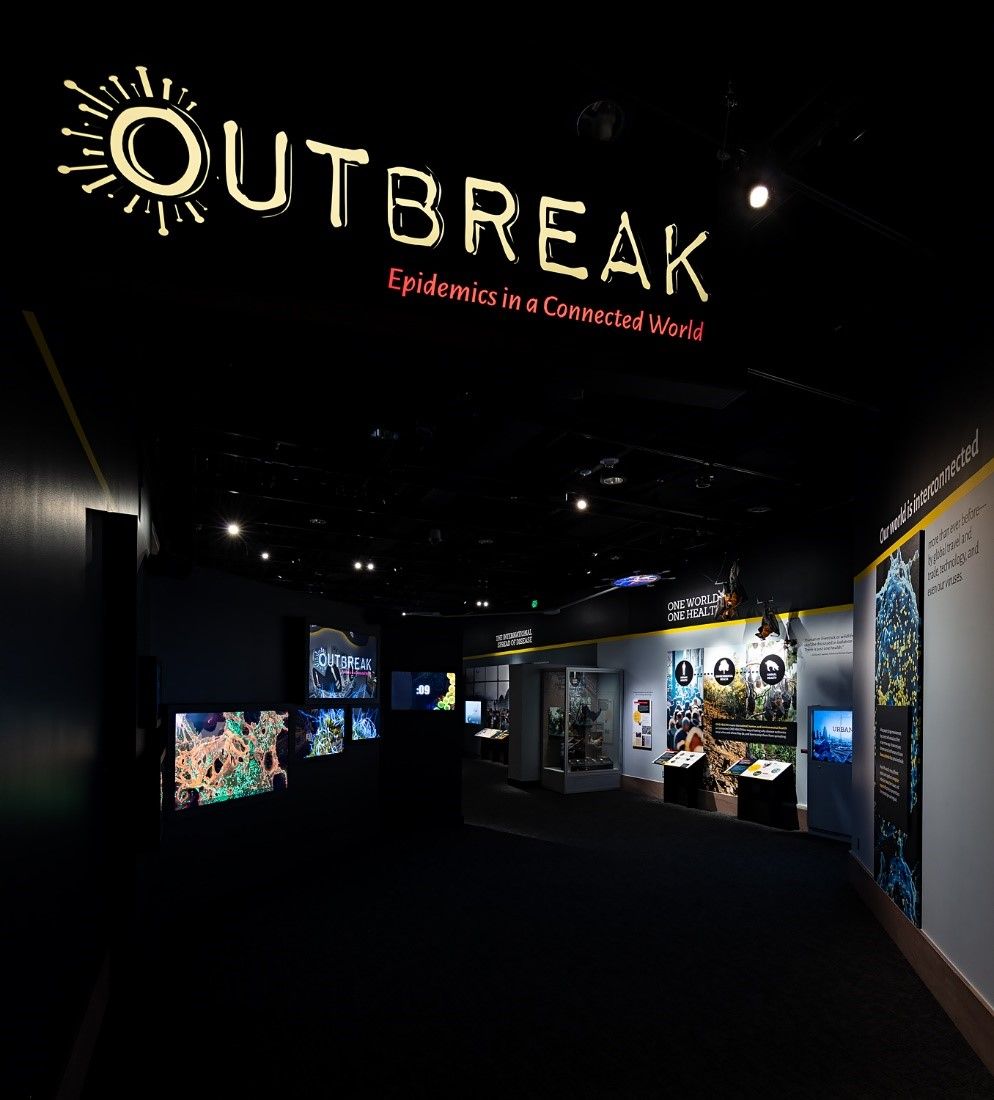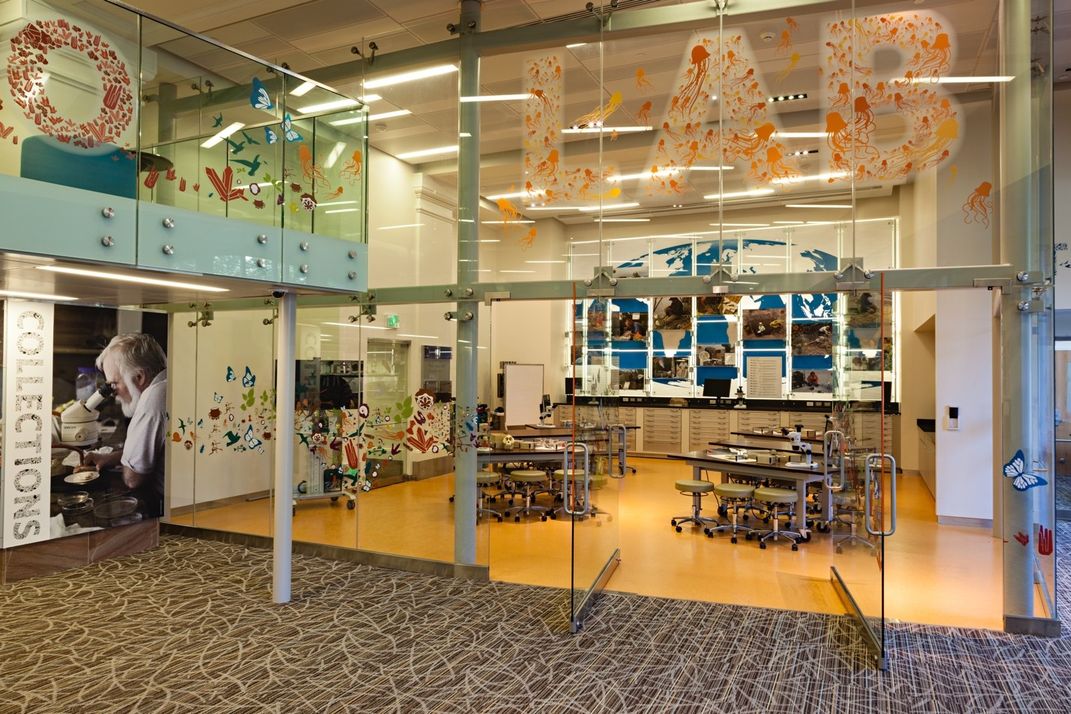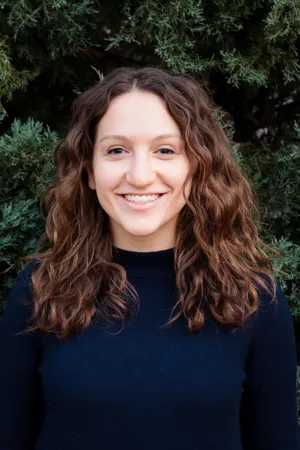NATIONAL MUSEUM OF NATURAL HISTORY
Meet the Smithsonian Natural History Museum’s New Head of Education, Outreach and Visitor Experience
Carla Easter to champion widespread community engagement and accessible scientific outreach as the museum’s new Broh-Kahn Weil Director of Education.
/https://tf-cmsv2-smithsonianmag-media.s3.amazonaws.com/blogging/featured/Person_leaning_against_museum_display_of_science_artifacts.jpg)
Understanding how to interest people in a museum with the size and scope of the Smithsonian’s National Museum of Natural History should seem like an easy task. The museum houses roughly 146 million specimens and artifacts. Its exhibits, which are currently available virtually, display plenty of fascinating science.
But the museum’s success does not only come from its exhibits, collections and artifacts. It also comes from widespread community engagement and accessible scientific outreach — two causes championed by Carla Easter, the museum’s new Broh-Kahn Weil Director of Education.
In the following interview, Easter shares what excites her about her new role and what her guiding philosophies are for education, outreach and visitor experience at the National Museum of Natural History.
What excites you about working at the Smithsonian now as the leader of the Department of Education, Outreach and Visitor Experience (EOVE)?
My passion is working with communities that have been underserved and under-resourced and, in some cases, not really understood. The possibilities of bringing those communities into the Smithsonian and creating allyship with those communities makes me excited.
The other thing is that this is an opportunity to influence a whole new generation of changemakers. To be able to work with these amazing, early career scientists who are going to change the world — to be able to work with them and give them opportunities — that is really inspiring.
What guiding philosophies do you bring with you to the museum? What are your goals for EOVE?
I believe in fostering an allyship environment, where the museum is seen not only as a resource, but as a truly trusted ally and collaborator. Things are accomplished so much faster, easier and better when you find the partners to work with that have a shared interest in the outcome.
Since I plan to build relationships with local, national and international communities, my philosophy of collaboration and partnership allows me to think about how to build those networks. I also am thinking about how those networks will support the museum even beyond its educational endeavors.
It all comes down to understanding that we can change the world together. One person can do a lot but as a collective we can do so much more.
What is the value of the Natural History Museum and museums in general as places for community engagement and scientific outreach?
Cultural institutions, like the National Museum of Natural History and other museums, can be catalysts for change. People can look to museums to see what the history is behind the systems that they hope to change. Also, the people who dedicate themselves to being in cultural institutions do so because they’re invested in how those institutions function for society. So, we have not only scientific experts, but also social collateral. We serve as a place where anyone can come to find a safe space to have change-making conversations.
In terms of community engagement and scientific outreach, the museum is a safe place that doesn’t hold judgement. Anyone can see an exhibition and leave forming their own opinions. It is a space for healthy debate, where judgment isn’t placed upon someone because they may feel a different way.

If you think about the exhibit “Outbreak: Epidemics in a Connected World,” it allows people to experience the science behind epidemiological outbreaks. The information is presented in a way that is easily understood and in a safe space for conversations to happen. That’s invaluable especially with COVID-19.
You have a scientific background in molecular genetics at the National Human Genome Research Institute and have worked at the National Institutes of Health. But even before those roles, you were a research instructor of genetics at Washington University School of Medicine. How does your past background as a scientist come into play in your current role as community engagement and education leader?
My background as a scientist means I understand the struggles and frustrations but also the excitement that science brings. At my very deepest core, I am someone who has always loved trying to find answers.
Coming to the museum with a science background means I see the museum as an opportunity to learn more science. There are so many new things happening in the museum’s departments for me to experience.
My background has also given me a unique perspective. Because I’ve been doing science all my life, I’ve gained the ability to break research down into something accessible and easily understood.
What are some of the key things you consider when creating initiatives that make science accessible?
First and foremost, I think about who we are trying to reach. Who are the people that really need or want this information? Sometimes there are initiatives where we have a very defined audience like kindergarteners at a particular school. But in general, it’s always about who we are trying to connect with and what are the best ways to reach them. I want to be sure no matter the initiative, I’m doing all I can do to make it accessible.
Why is it important for younger generations to learn science and how can the museum’s collections be a part of that process?

Everybody deserves the opportunity to know as much about their world as possible. Students who come into programs like Q?rius, The Coralyn W. Whitney Science Education Center — where they can work with the collections — gain exposure to the scientific process. Even if these students don’t choose to go into the sciences, understanding that process is invaluable. Science teaches us how to solve problems through taking something and breaking it down.
The museum is also a space where people can think about their role in the natural world. Being able to touch and feel those collections and being able to talk to scientists helps the people who visit realize what role they can play.
For me personally, it all goes back to young people. When I think about my goal to create changemakers and leaders, I think about secondary students. They're discovering themselves and trying to figure out what their place is in the world. Out of that comes so much creativity and opportunity. And we can’t leave out younger students and middle school students as well. There, we can start to plant the seeds of science and discovery and teach them to value science as early as possible.
Young people are the future. The museum can give them the experiences they need to succeed. We can open the world to young people to help them become the leaders they have the potential to be.
Related Stories:
Meet the Smithsonian’s Newest Chief Scientist
‘One Health’ Could Prevent the Next Coronavirus Outbreak
New App Takes Smithsonian Visitors Beyond Visuals
Try These Hands-on Activities in the Smithsonian’s New Fossil Hall

